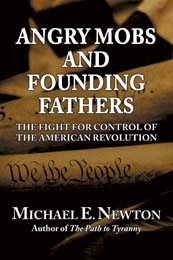One of the demands by the Occupy Wall Street protestors is student loan relief. According to a report by CNBC:
It may be hard to pin down exactly what the Occupy Wall Street protesters want, but one of the sources of their frustration seems clear. Many of the demonstrators are drowning in student debt.
[…]
One proposed list of demands for the Occupy Wall Street movement includes “free college tuition” and “immediate across the board forgiveness” of student debt. While neither demand may be very realistic, the student debt problem is very real.
[…]
Of course, if some of the protesters get their way, with free tuition and debt forgiveness, the problem might go away. Rose Swidden, the agriculture student-turned-protester, acknowledges the demands may be far-fetched, but said it is worth a try.
“Sometimes if you shoot for the moon, you land in the stars.”
This is not the first time the United States has seen these demands for debt relief. The same demand was made 225 years ago during Shays’ Rebellion. As I describe in Angry Mobs and Founding Fathers:
Daniel Shays was one such army veteran disappointed by how the government treated veterans. Shays, who returned to farming after the war, was also angered by how creditors treated farmers who had borrowed money. As delegates from five states met in Annapolis in 1786 to try to fix some of the defects of the Articles of Confederation, Daniel Shays led a rebellion of 1,200 men against the Massachusetts government.
General Henry Knox wrote to George Washington explaining the objectives of Shays and his followers: “Their creed is, that the property of the United States has been protected from the confiscation of Britain by the joint exertions of all, and therefore ought to be the common property of all; and he that attempts opposition to this creed, is an enemy to equity and justice, and ought to be swept off the face of the earth… They are determined to annihilate all debts, public and private, and have agrarian laws, which are easily effected by the means of unfunded paper money, which shall be a tender in all cases whatever.”
While Shays’ Rebellion was put down quite easily, it could have easily led to civil war (from Angry Mobs and Founding Fathers):
Shays’ Rebellion was put down in January 1787 by a well-armed force of 4,400 men. Alexander Hamilton noted how close America came to civil war: “Who can determine what might have been the issue of her late convulsions, if the malcontents had been headed by a Caesar or by a Cromwell?”
In fact, although the rebellion itself was stopped and no Caesar or Cromwell emerged, the story did not end there (from Angry Mobs and Founding Fathers):
The rebels were pardoned and they succeeded in elections the following year. The new legislature passed the debt relief that the rebels demanded.
Shays’ Rebellion was all about debt relief, which is a major demand of the Occupy Wall Street protests.
We surely should heed the words of General Henry Knox and Alexander Hamilton and swear off this idea of debt forgiveness. Debt forgiveness is nothing more than stealing from a large number of people to satisfy the demand of a small but vocal minority.
– Michael E. Newton is the author of the highly acclaimed The Path to Tyranny: A History of Free Society’s Descent into Tyranny. His newest book, Angry Mobs and Founding Fathers: The Fight for Control of the American Revolution, was released by Eleftheria Publishing in July.




It’s a bit unfair to the men of Shay’s rebellion as they had, at one point, actually done something other than whine…still we had Madison, Hamilton, Jay, Washington, Franklin (and all the rest) to counter Shay…what do we have nowadays?
I am not trying to compare our current group of whiners to Shays and his rebels. I am comparing the outcome of the demand for debt forgiveness. Even when debt forgiveness is done for good reasons, it is harmful. When it is done for the wrong reasons, it’s just evil.
I never knew that so many Americans sympathized with Shays. Many over at FreeRepublic are defending Shays’ actions in response to my post.
Oh I wasn’t trying to defend Shay (who in their right mind would do that?) I was simply pointing out that even as criminal as Shay and his cohorts were they were still better than the Occupy Wall Street whiners.
And I would agree with you debt forgiveness is a terrible idea, although, I would argue, so is giving out so many loans, grants, and subsidies for college tuition with has created hyperinflation in the cost of college…but one stupid economic move (massive loans) isn’t justification for another (debt forgiveness).
Correct me if I’m wrong, but as I remember it, the debt problems of the Shay’s Rebellion farmers were not of their own making – the Revolution had been financed largely by paper money, and the farmers had been badly hurt by the consequent inflation, and the absence of any sound money anywhere. To stay alive, they had been forced to sell their paper for huge discounts, and the speculators doing the buying were then demanding that state governments honor the paper at face value. To do so, the state was proposing to tax the farmers to come up with the money. THAT was Shay’s issue, was it not? Those farmers didn’t get where they were by insane borrowing the way the OWS crowd has done.
There was no solution to the post-Revolutionary problems until our Constitution was written and enacted, and even then the Federal government had to resort to selling of vast tracts of land in Ohio to come up with money to pay off the war debts. What will we sell this time?
You state in your post that after the rebellion was put down the new legislature passed the debt relief that the rebels demanded. Isn’t that the action you’re condemning? or is it the rebellion? So what was the outcome of that action? Did Massachusetts fall into some sort of recession or violent chaos?
Yes, they accomplished through legislation what they failed to accomplish through rebellion. Kind of the opposite of most revolutions.
Massachusetts and the whole country was in recession, if you could call it that. Actually, the economy was growing, recovering from the pains of the war. But growth was slow and there were many economic problems, especially the trade disputes between the states. Shays’ Rebellion, along with other things, caused the states to meet in Philadelphia for the Constitutional Convention.
Pingback: Are You Better Off Than You Were 4 Years Ago? « nebraskaenergyobserver
Correct me if I’m wrong, but as I remember it, the debt problems of the Shay’s Rebellion farmers were not of their own making – the Revolution had been financed largely by paper money, and the farmers had been badly hurt by the consequent inflation, and the absence of any sound money anywhere. To stay alive, they had been forced to sell their paper for huge discounts, and the speculators doing the buying were then demanding that state governments honor the paper at face value. To do so, the state was proposing to tax the farmers to come up with the money. THAT was Shay’s issue, was it not? Those farmers didn’t get where they were by insane borrowing the way the OWS crowd has done.
+1
Pingback: Occupy Wall Street: A return to the chaos of ancient Greece and Rome | The Path to Tyranny Blog
Pingback: Occupy Wall Street: A return to the chaos of ancient Greece and Rome « Sago
Pingback: The Regulation, Shay’s Rebellion and Our Energy Economics Future « Zap! Crackle! Pop!